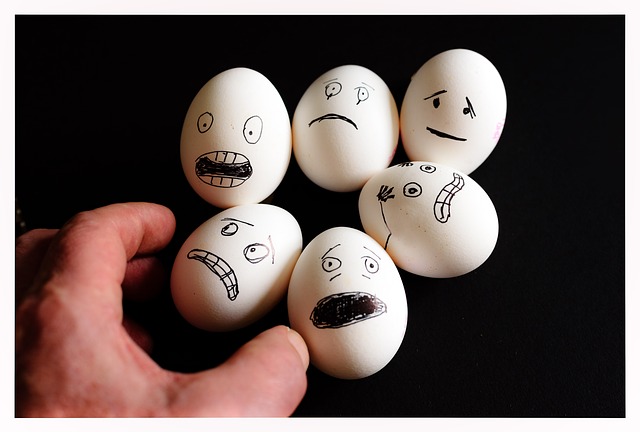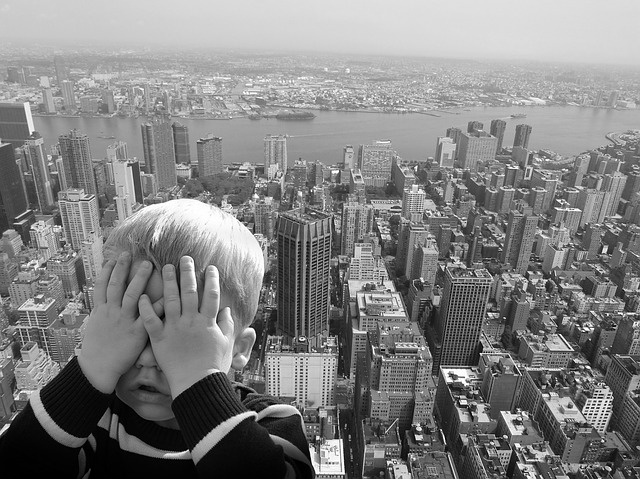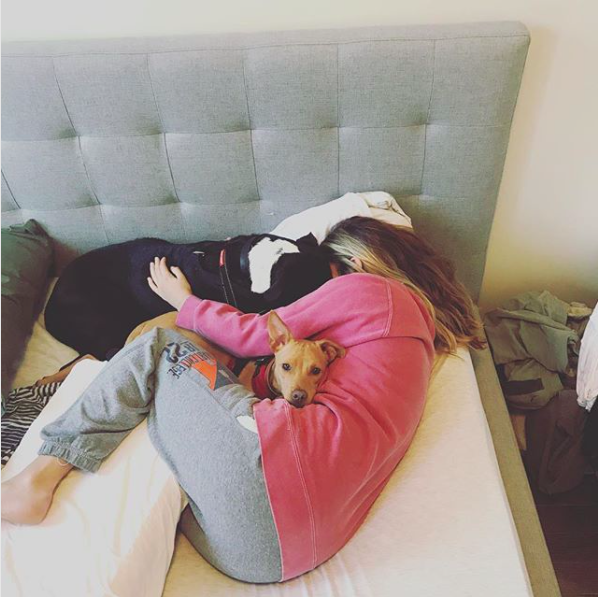Sure, we all probably have something that makes us a bit afraid, perhaps a trip to the dentist or a little spider climbing up the bedroom wall. But when these “small” fears become so overwhelming that it keeps us from functioning in our daily lives, it has crossed over into a phobia.
In this post, we are going to explore the difference between fears and phobias, the categories and types of fears and phobias, what the symptoms are and how having an emotional support animal could help with these conditions.
To qualify for an Emotional Support Animal, you need to get an ESA Letter.
Click here to get started on qualifying for your ESA letter.
What is the Difference Between Fears & Phobias?
Fear is a normal response to something that could be potentially dangerous, like being in a bank when it’s being robbed. This fight-or-flight reaction is helpful in keeping us alive. A phobia, on the other hand, is an intense and debilitating fear of something that in all actuality poses little threat. Even though the person with a phobia knows it is an irrational reaction, he/she still cannot control their fear-based response to the situation. Here are the differences between a fear and a phobia;
- Normal Fear – feeling anxious on a bumpy, turbulent airplane ride
- Phobia – skipping a wedding or a dream vacation because you would have to fly to get there.
- Normal Fear – being squeamish when looking down from a tall ladder or skyscraper.
- Phobia – missing a great job opportunity because it is on the 8th floor of a building.
- Normal Fear – being nervous of larger breed dogs
- Phobia – avoiding any area where any type of dog may be.
- Normal Fear – being anxious or even nauseous when having a needle or blood work drawn
- Phobia – avoiding any medical check up or a test for an illness in case it involves a needle.
Types of Fears & Phobias

A phobia is an intense and debilitating fear of something that in all actuality poses little threat.
There are four types of common fears and phobias that can be categorized into different groups. These are;
- Environmental – examples of these may be thunderstorms, water, heights and fear of the dark.
- Animals – fear of rodents, insects, snakes and even domesticated animals such as dogs/cats.
- Situational – driving through tunnels or bridges, fear of small spaces (claustrophobia) and fear of flying.
- Injury and Needles – fear of getting a needle, having blood drawn, illness, injury or having any medical procedure.
- Miscellaneous – fear of getting cancer, fear of choking or even the fear of clowns.
In addition to these categories of fear and phobias, there are two more phobias that need to be mentioned.
- Social phobia – people who suffer from the fear of public speaking and those that are afraid of social situations. This type of phobia is characterized by the person’s fear of being judged, criticized or being made fun of. These folks tend to suffer from low self-esteem and will be excessively self-conscious even to the point of not eating in public.
- Agoraphobia (fear of open spaces) – this debilitating phobia is now thought to be based on the fear of having a panic attack with nowhere to escape. People will avoid busy places like malls, theaters etc. to keep themselves from being embarrassed when experiencing a panic attack.
Symptoms of Fears & Phobias

The symptoms of fear and phobias can be mild to full-blown panic. Typically, people who suffer from fear and phobia will be worse the closer they are to their trigger. They may also be worse if there is no apparent place to quickly escape to.
Here are the physical and emotional symptoms of fear and phobia;
Physical Symptoms
- Racing/pounding heart
- Difficulty breathing
- Dizziness or being light-headed
- Tightening or pain in the chest
- Feeling faint or flushed
- Sweating
- Churning stomach
- Shaking or trembling
Emotional Symptoms
- Feelings of intense panic/anxiety
- Overwhelming need to escape
- Fear of losing control or “going crazy”
- Feeling detached from yourself
- Feeling powerless to control the emotions
- Feeling like you may faint or even die
How an Emotional Support Animal Can Help With Fears & Phobias

Photo cred: @masedog_piperpup
There has been a number of studies done that show having an animal in your life is just plain good for you. In fact, just petting a dog or cat has shown to lower blood pressure and have an overall calming and positive effect on the person’s mood and brain function.
If you suffer from a fear or phobia having an emotional support animal may be the answer. Even if your phobia is of dogs, ESA’s can be of any species of animal and are best chosen for the individual’s own preference.
Social phobias, in particular, can be greatly affected by having a canine companion. A dog can be very motivating as you need to take it outdoors for walks and playtime. It reduces stress and can even make social interactions a positive experience (who doesn’t like to stop and pet a cute dog?).
Dogs and cats also offer unconditional love. For those that suffer from low self-esteem, this can be very edifying as an ESA will not judge or criticize the person for being awkward or afraid. In addition, having an ESA can bolster a medically supervised treatment plan by giving the patient a gateway to independence and freedom.
ESA’s and Fears & Phobias
Having a devoted ESA can make all the difference in those people who suffer from fears and phobias. Dogs, in particular, have an innate sense of when their owner is feeling stressed or in turmoil. Many will come to their owner’s and lie their head on their lap or offer up a tummy to be rubbed. If you think an ESA may help in your treatment of a debilitating fear or phobia, be sure to get an animal that makes you feel calm, safe and happy.
Start your questionnaire now to see if you qualify for an emotional support animal.
Get the Love and Support you deserve.






Leave a Comment